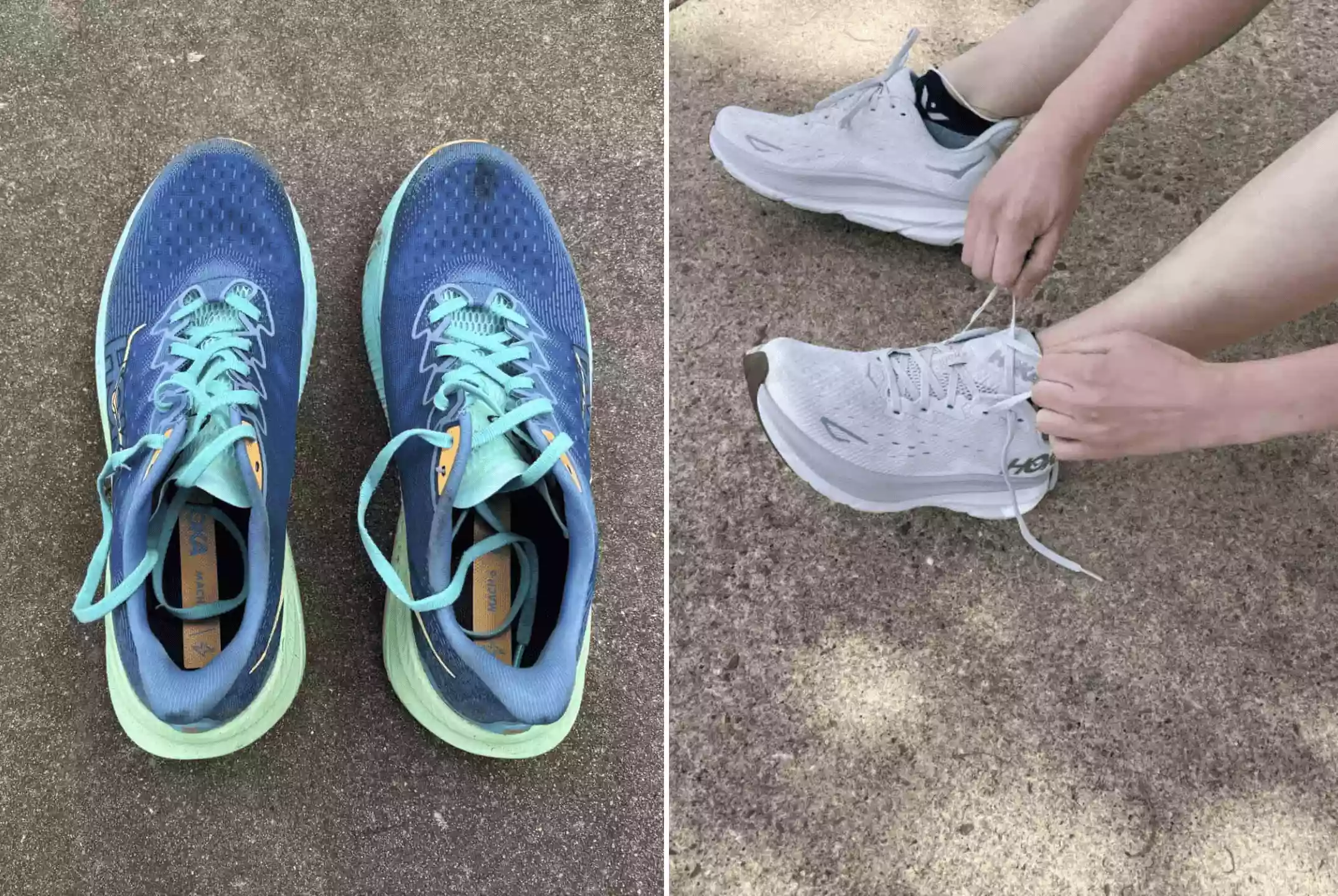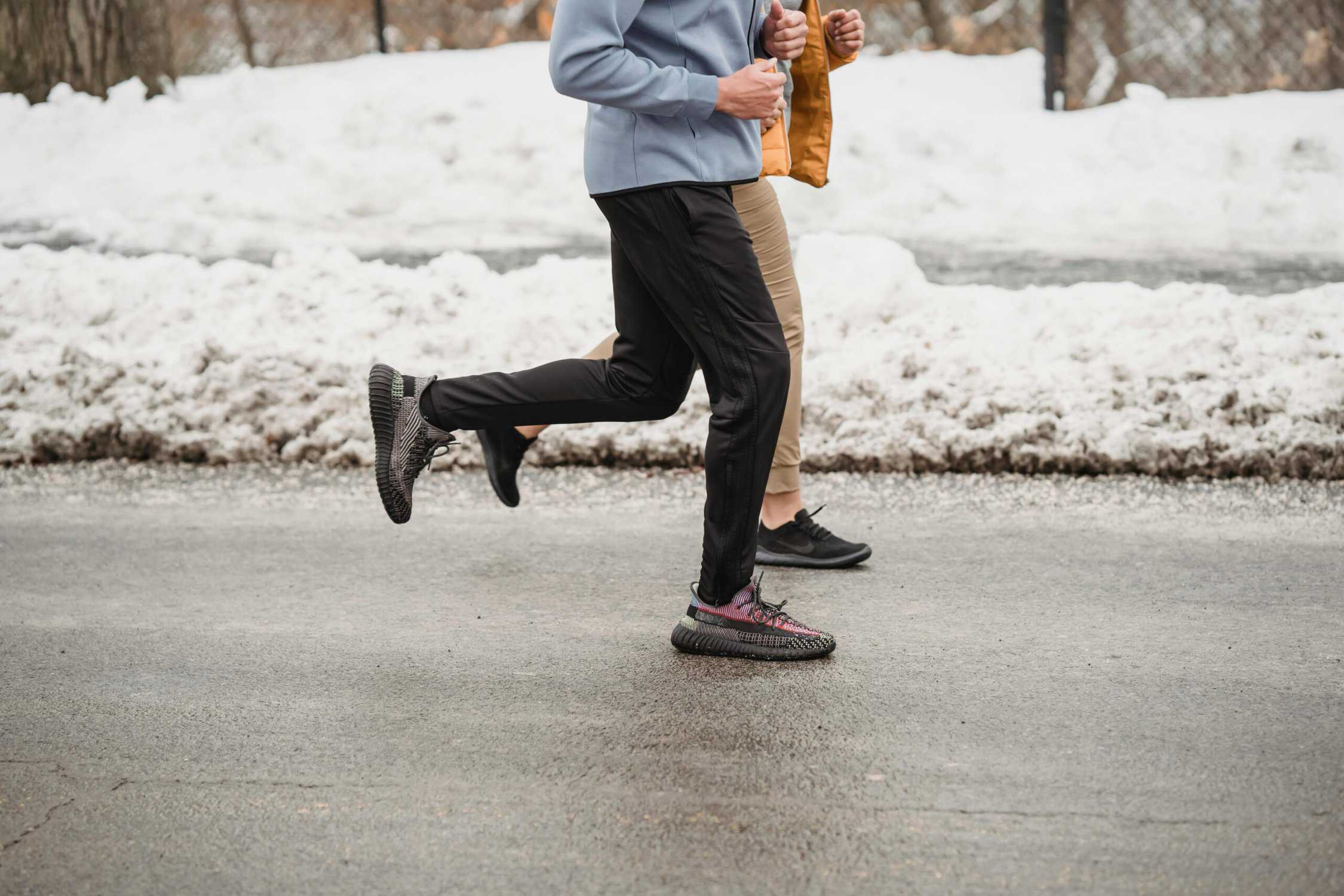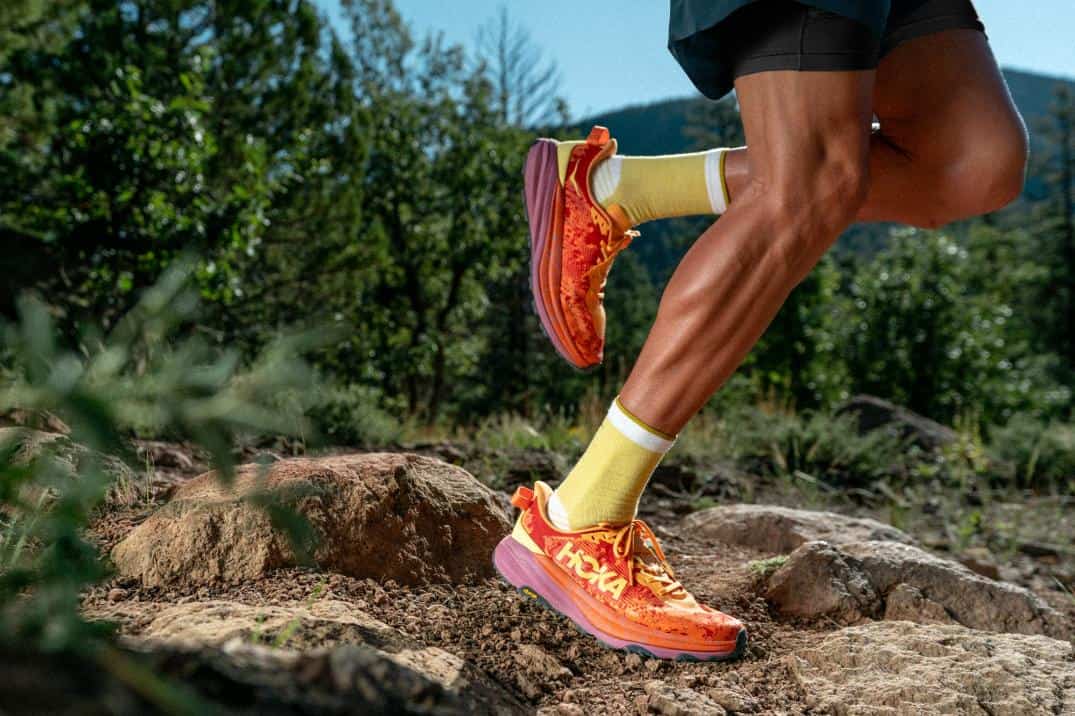As a gear editor, I have run in my fair share of Brooks over the years, and am an avid supporter of high-cushion running shoes. But I’ve found past versions of the Glycerin simply too soft to run in. The newest release has changed my mind: After testing the Glycerin 21 over roughly 40 miles, the newest design manages to keep a plush and protective feel without compromising performance.
There were a lot of design changes to the latest model. But all of which have made the Glycerin 21 a much better fit for runners who want a high-cushion feel in an every-day training shoe.
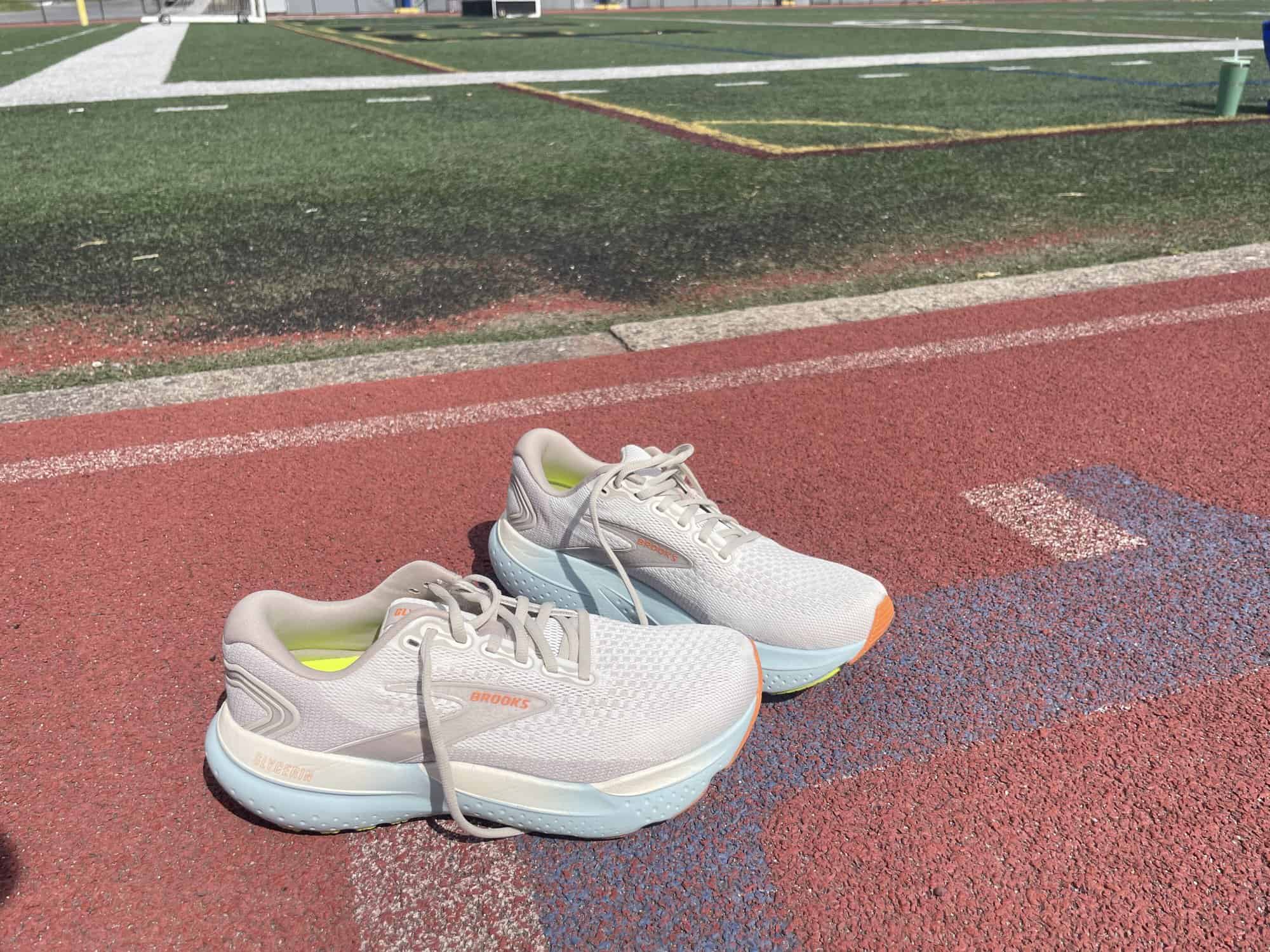
How I Tested
I wore the Glycerin 21 on multiple runs, errands, and even a full day of spring cleaning my friend’s apartment, which included too many trips up and down the stairs to count. Between all of these, I put about 40 miles on the shoes total.
To see how they felt on different surfaces, I tested them on grass, cinders, track, treadmill, and the roads. I also tested them out at speeds everywhere from a casual walk up to an all out sprint to see how they transitioned between different paces.
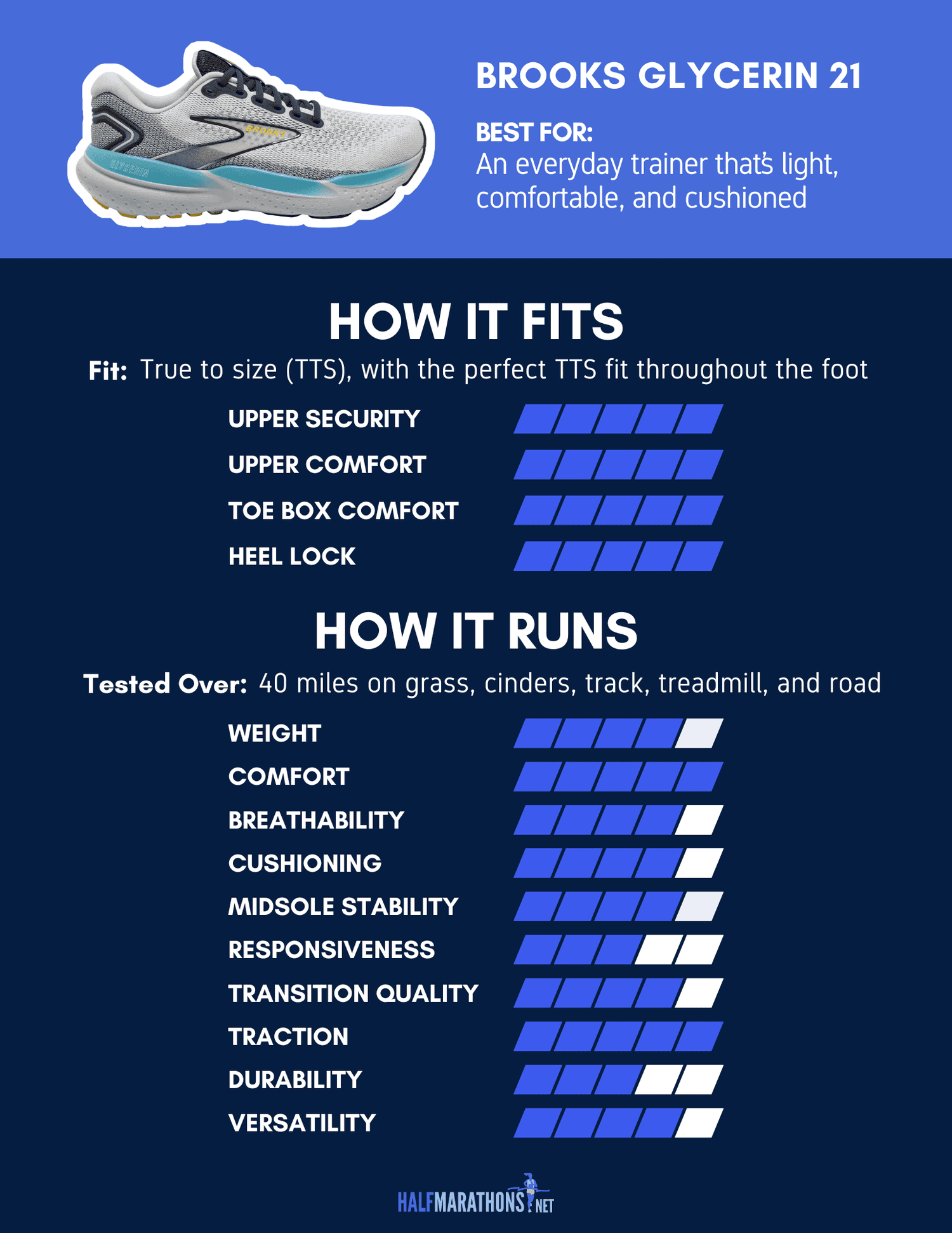
Specs
- Fit: Brooks the last couple of years have run both short and narrow. But the Glycerin 21 are incredibly true to size and have an excellent fit all through the foot. They are snug enough in the heel and midfoot that I don’t feel like I’m slipping around, and the toe box was widened to prevent any rubbing, pressing, or crunching of the toes.
- Comfort: The biggest sell of the Glycerin is the comfort. They offer a plush, high-cushion feel without feeling like a platform. The foam is soft and bouncy and feels great even after a long time on your feet, and the upper is breathable and moves with the foot without feeling restrictive. It also has a soft and supportive sock liner which helps to cradle the foot and give an extra layer of comfort.
- Upper Fit Security: The shoes are highly breathable, but the heel cup, which is firm and highly padded, keep the heel in place. The shoe shape cuts in near the midfoot and flares at the toes, allowing you to lock the foot in place without compromising your toe box. I also appreciate the laces which seem to grip better than any other brand.
- Upper Comfort: This shoe doesn’t feel restrictive or uncomfortable in the upper. It is plush where you need it — the tongue and heel — and there aren’t any areas of overlays or stitching that causes irritation.
- Toe box comfort: This shoe has a wide toe box, but the midfoot stays secure on uneven surfaces or downhill runs. It has both vertical and horizontal room in the toe box which prevents it from squeezing both wide feet and high arches.
- Heel Lock: Although this is a neutral shoe, it has an excellent heel lock that provides some motion control and support without really affecting your gait. It also is highly padded which prevents excessive pressure on the achilles, and irritation from friction.
- Cushioning: This shoe has more than enough cushioning for most runners to use as a recovery shoe or a daily trainer aimed at comfort and cushion. It has a much lower profile than many high-cushion running shoes, so it doesn’t have the same level of plushness and shock absorption as a shoe like the Hoka Bondi would.
- Midsole Stability: As a neutral shoe, the Glycerin 21 doesn’t give the same support that a stability model like the Glycerin GTS or Adrenaline GTS would. For a neutral shoe, it does a pretty good job at stability. It flares at the sides of the toe and heel to give you a wider and therefore more stable base, and it comes up a bit on the sides of the foot to keep your foot on top of the midsole foam.
- Ride Responsiveness: Brooks shoes aren’t typically responsive, but this version of the Glycerin feels bouncier than its predecessors. The Loft DNA v3 is a nitrogen-infused EVA foam that is light and soft without being squishy.
- Transition Quality: When walking and running, I found I very easily rolled from heel to toe. This shoe offered a much more natural feeling than a meta rocker shoe.
- Traction: Close to an all-terrain shoe, I found the Glycerin 21 has a super durable and grippy outsole as well as decently aggressive lugs. Although they aren’t a trail shoe, they hold up on trail runs as well as grass and gravel; they’re much grippier than most road shoes.
- Durability: As far as the upper and outsole go, this shoe is pretty dang durable. I’ve had Brooks that look almost new with a couple hundred miles on them. However, while the midsole feels soft and plush at the beginning, it’s the first thing to break down, particularly under the forefoot. This model has more foam than previous models so it should last longer, but if you are a toe or heel striker, you will probably feel the foam break down in your striking area first.
- Breathability: The Glycerin upper is made from a structured but breathable mesh. Even on hot days, I never felt my feet were overheating. In muggy weather, my feet felt dry and cool.
- Weight: As high-cushion shoes, the Glycerin carry a bit more weight than a lighter cushion model, but they still feel quite light on the foot. I never felt weighed down, even on speedier runs and jumping rope.
- Design/Aesthetics: The Glycerin 21 design is pretty palatable with some questionable colorways but also a range of understated neutrals. Many colors have very limited sizing or are completely sold out—an unfortunate consequence of a popular shoe.
- Innovation: Brooks didn’t bring any monumental breakthroughs with this shoe, but one big change was a lighter and softer midsole foam, giving the shoe a plusher feel all the way through. It also has a sustainable upper with materials from recycled water bottles.
- Versatility: This is a solid high-cushion shoe for all your training runs and workouts. It can handle a range of terrain, too. It may feel too soft for responsive speedwork for some.
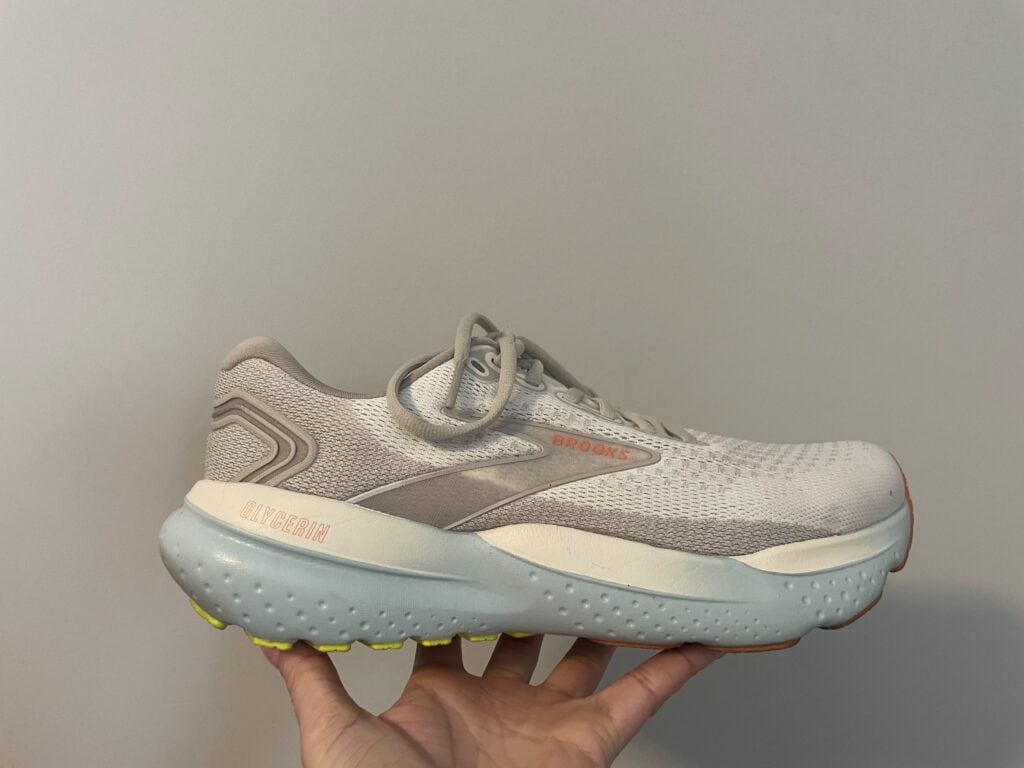
Design and Aesthetics
Compared to previous models, the tech changes on the Glycerin 21 made marked improvement. Brooks widened out the toe box but retained a snug midfoot that holds you in place while allowing your toes to spread out.
It also swapped out the old DNA Loft foam for the new one which makes it bouncier and more responsive, despite having more cushion underfoot. Moreover, Brooks added 2mm more foam to the midsole — not enough to feel particularly bulky, but enough to make a significant difference in the plushness and shock absorption of the shoe. This addition also gave the shoe more stability, allowing runners to feel more secure on loose and uneven surfaces.
The Glycerin 21 has a pretty standard running shoe look, but it’s sleek and understated. It has good color options in both neutral tones and flashier combos.
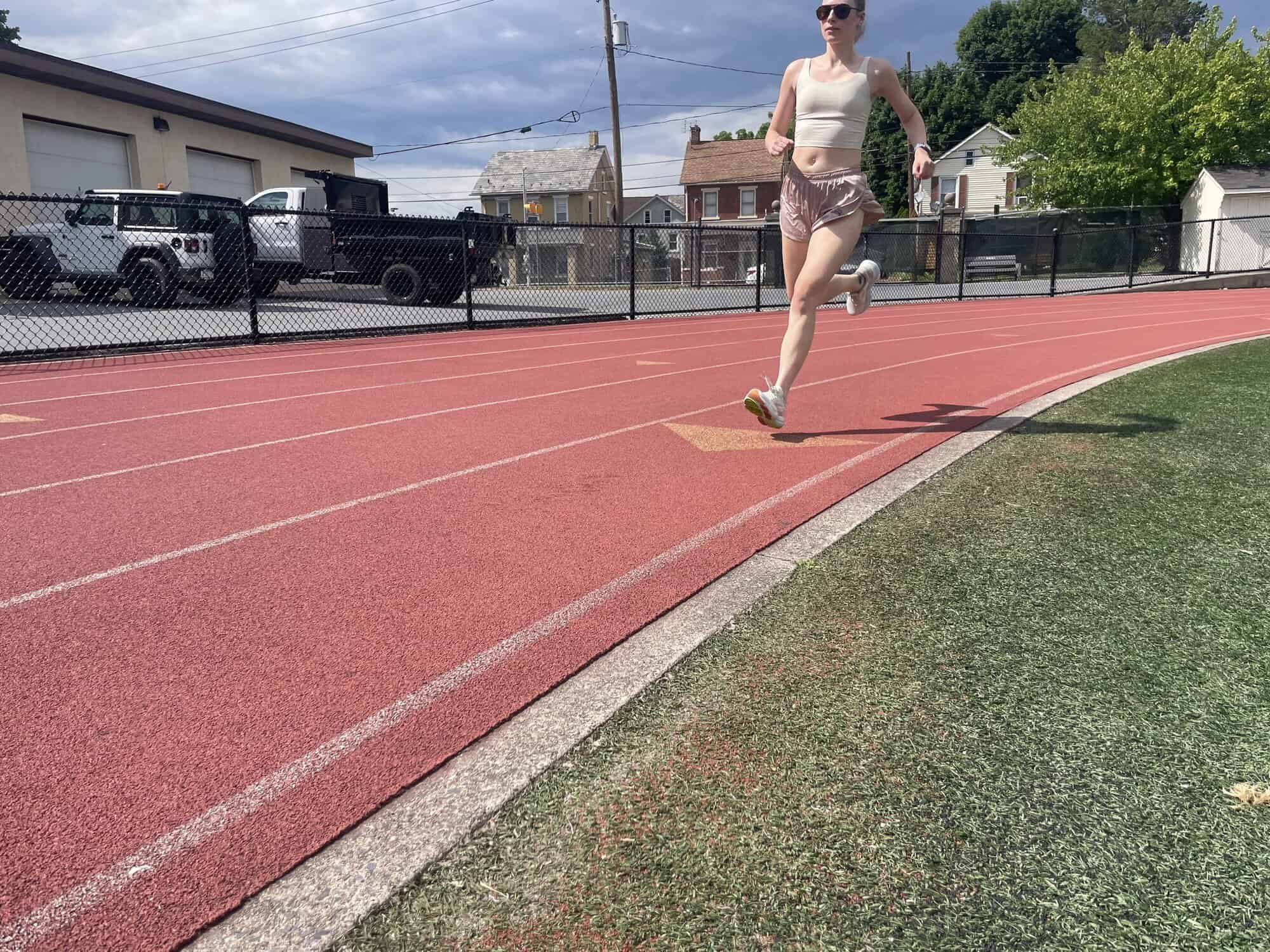
Testing Performance
I’ve found past Glycerin models comfortable for walking but too soft to run in. The Glycerin 21 seems to have hit a sweet spot: When both running and walking, I found these shoes to be incredibly comfortable under and on top of the foot. The foam feels light, bouncy, and firm enough that it’s supportive while still remaining a cushioned shoe.
While Brooks generally have a wider toe box, I appreciated the particularly generous toe box of the Glycerin 21. It wasn’t so wide that my foot was slipping around, but just enough that I had a bit of extra room for toe spread and nothing was pressing or putting undue pressure on my foot.
When running, these shoes fit the bill of a daily trainer. They are grippy and supportive on a number of surfaces — even wet grass and cinders — and provide excellent support on hilly terrain. The forefoot cushioning, where a shoe usually wears out first for me, is superior to past models. It’s slightly firmer, leads me to believe that they will hold up longer and resist compression better over time.
Since the foam feels bouncier, I think the versatility of the shoe has improved, making it a great choice for every pace and distance. In my testing, I found that it transitioned easily between paces and surfaces.
Pros and Cons
Pros:
- Wide toe box
- Grippy and durable outsole
- Comfortable, breathable upper
- Secure but not suffocating fit
Cons:
- Midsole foam doesn’t have the best longevity
- Limited color options
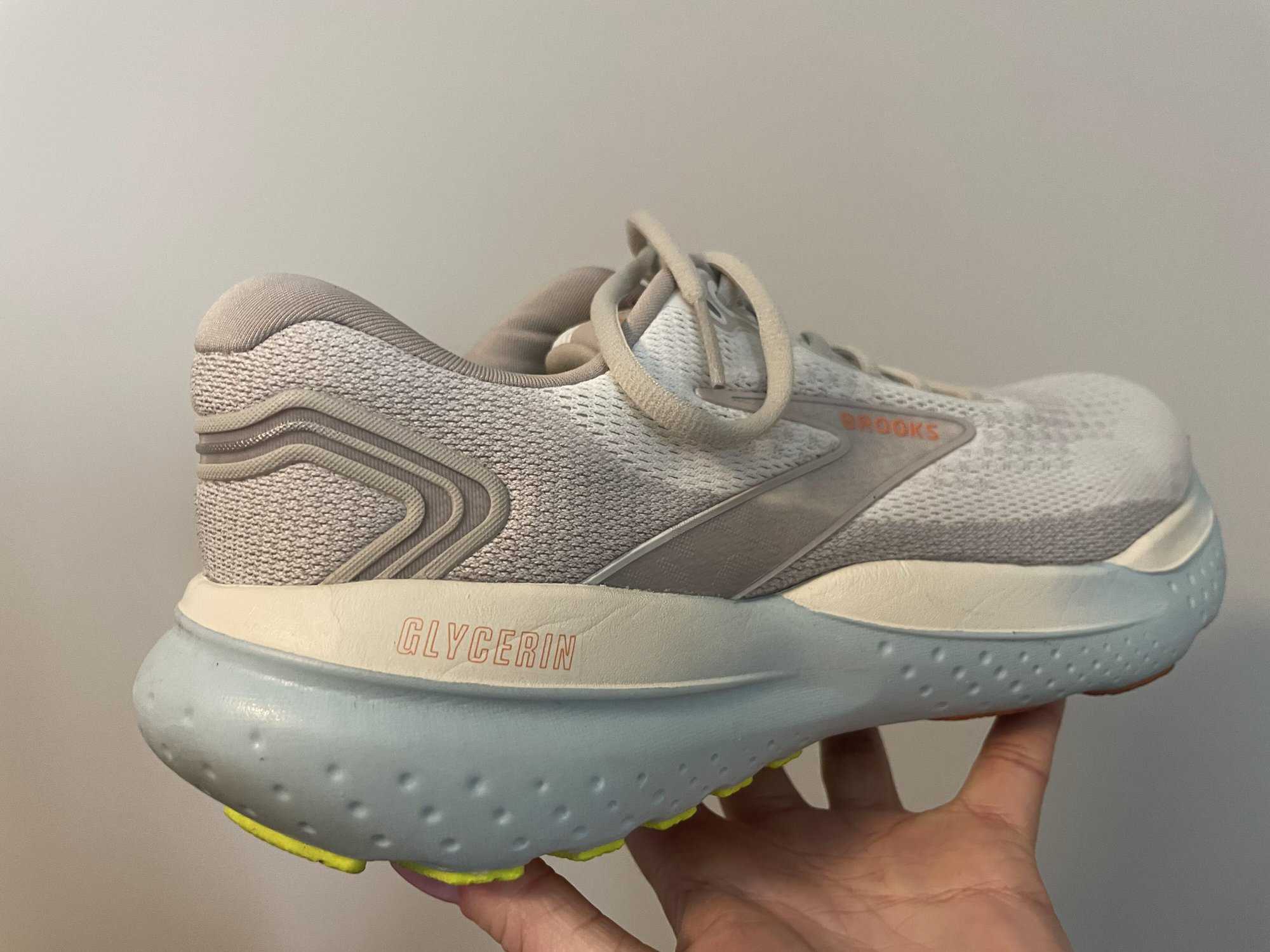
How the Shoes Stacks Up
The Glycerin 21 can be compared to just about any neutral, high-cushion shoe. It’s most direct competition in both design and price range is the Saucony Triumph 22 ($160) and New Balance 1080v 13 ($165). But the performance of the three shoes is very different.
If you want something more responsive, the Triumph is a better shoe for you. It’s made with a much bouncier midsole and it has a more aggressive rocker that helps you roll through the foot. The Triumph also has a much higher stack height, so less ground feel, and while the toe box is decently wide, so is the rest of the shoe, which means the heel can be a bit slippy. The outsole is also not nearly as thick, durable, or grippy as the rest of the shoe which means it’s best on flat and dry surfaces.
The New Balance 1080 offers the plushest ride of the bunch. It is made with Fresh Foam X for the entirety of the midsole, making it super soft but also pretty responsive. New Balances are also known for being wide in the toe box, though like the Saucony, I’ve found that they also run quite wide in the heel. The rubber outsole could be a bit more aggressive — especially for a daily training run shoe. But if you want a marshmallowy type feel, this could be the shoe for you.
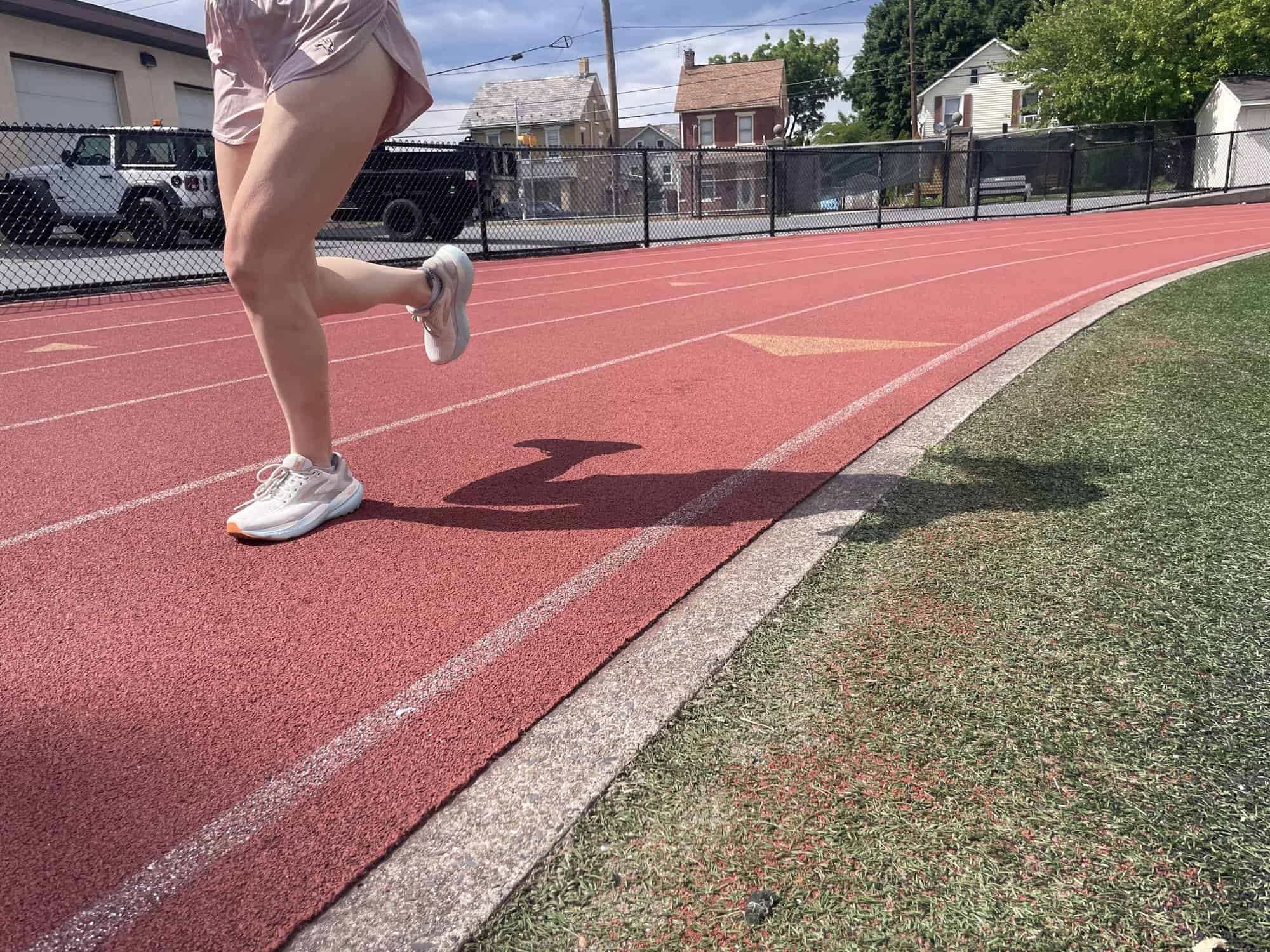
What Other Runners Think
Runners really seem to love the Glycerin 21. On the Brooks website, the most common reference in reviews was how incredibly comfortable the shoe was across the board of runners, walkers, and casual wearers. Many noted both the midsole and upper are highly comfortable, and that it’s breathable, light, and didn’t cause any unnecessary pressure or discomfort. One customer even stated that they were able to wear the shoes for 14+ hours at a time without any discomfort in their feet.
The main complaint is people experiencing blistering. While this can be due to an issue with the shoe, generally blistering is caused by an improper fit — which could be size or width — and not so much the design of the shoe.
On Reddit, there were a number of users that brought up how Brooks’ reputation as a so-called ‘normie’ brand makes serious runners less inclined to want their shoes. This is honestly pretty true, and I have had more than one occasion of runners shriveling their nose at a Brooks shoe when brought out at the running store.
But in reality, Brooks shoes are very much like vanilla ice cream: They are durable, comfortable, and work really really well for a majority of people. So while there are certainly flashier options out there, a shoe like the Glycerin 21 hits function over flash, and is more than capable of handling your longest runs and toughest workouts.

Price and Value
The Brooks Glycerin 21 hits the sweet spot of price for a high-cushion model at $160. After running in these shoes, I think this is both a fair and reasonable price for the shoe. The more cushioning a shoe has, the more expensive it will be because it is using more materials — plus higher cushion shoes often use higher quality foams as well.
Whether you are running, walking, or simply wearing the Glycerin, it is a pretty durable shoe. It should last you the standard 300-500 miles (shorter if you’re a heavy heel striker or drag your feet).
This shoe also has an excellent fit. Brooks seems to have figured out the proportions that work for just about every human foot — not to forget that most models also come in a range of widths.
Since it’s high cushion but also on the lighter side, this shoe works great as a daily training shoe. If you already have a couple models in your rotation, I recommend it for recovery and daily runs.
There are higher cushion shoes that are available at similar prices, such as the Hoka Bondi 8 ($165) or Asics Gel-Nimbus 26 ($160). These are a better choice if you prefer a softer, plusher feel.
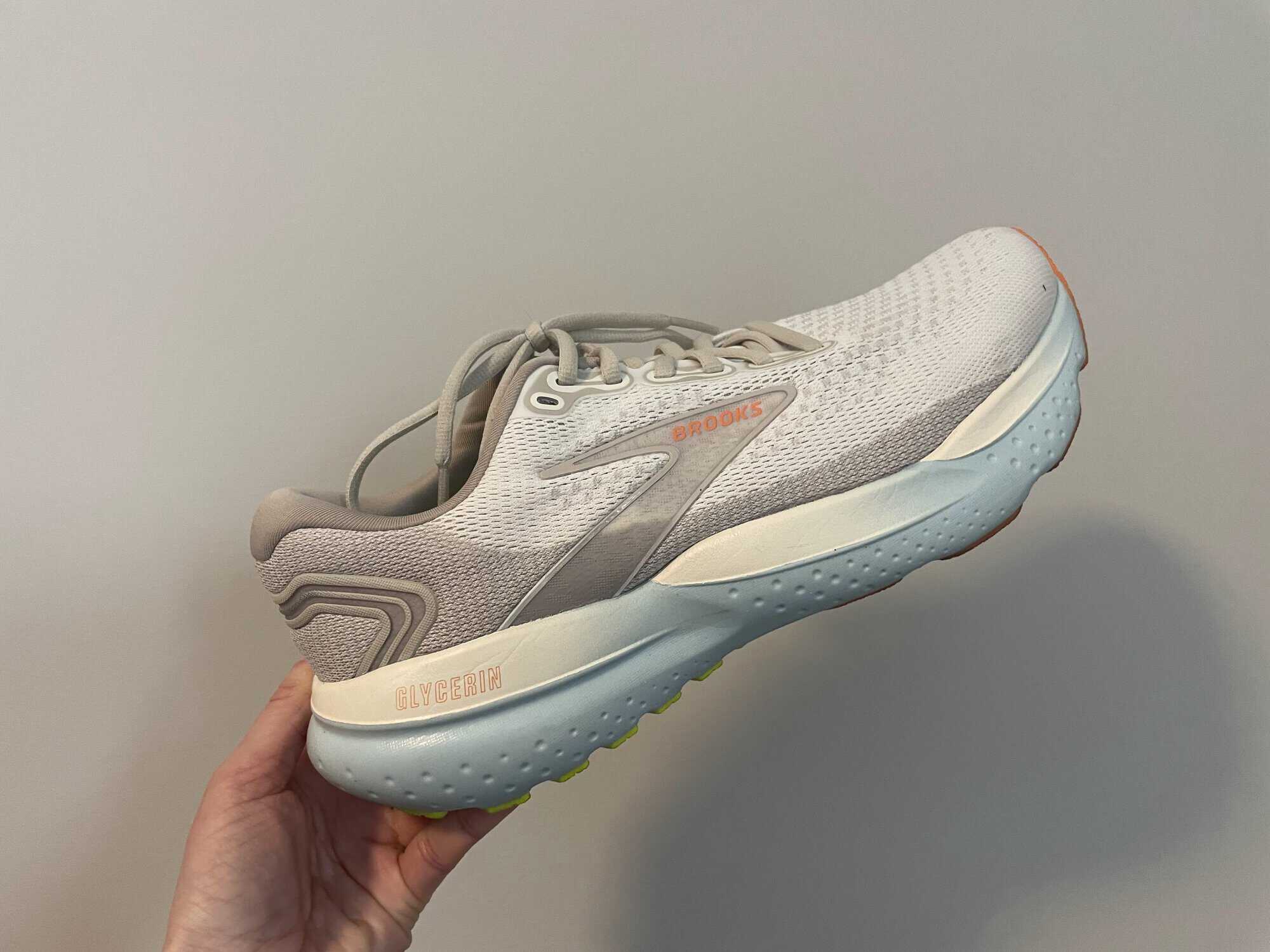
Final Word: Should You Buy the Glycerin 21?
If you want an everyday trainer that is light, comfortable, and cushioned, the Brooks Glycerin 21 is a fantastic option.
It’s worth noting: Brooks is often pooh-poohed for not being as cool or innovative as other running brands; people like to pit Hoka vs. Brooks against one another. But ultimately, there’s a reason it has been around so long — and why there are so many loyal Brooks customers.
The Glycerin 21s are workhorses, and often my go-to for runs where I need enough grip to go off road, enough cushion for extra long miles, and enough toe room to compensate for swelling feet.
The wide toe box allows for the feet to spread naturally and comfortably, and the midsole provides both cushion and comfort.
If you like the feel of a high-cushion trainer but find you need a bit more support, opt for the stability version of this shoe (the Glycerin GTS) which has nearly the exact same design but with the addition of guide rails.


